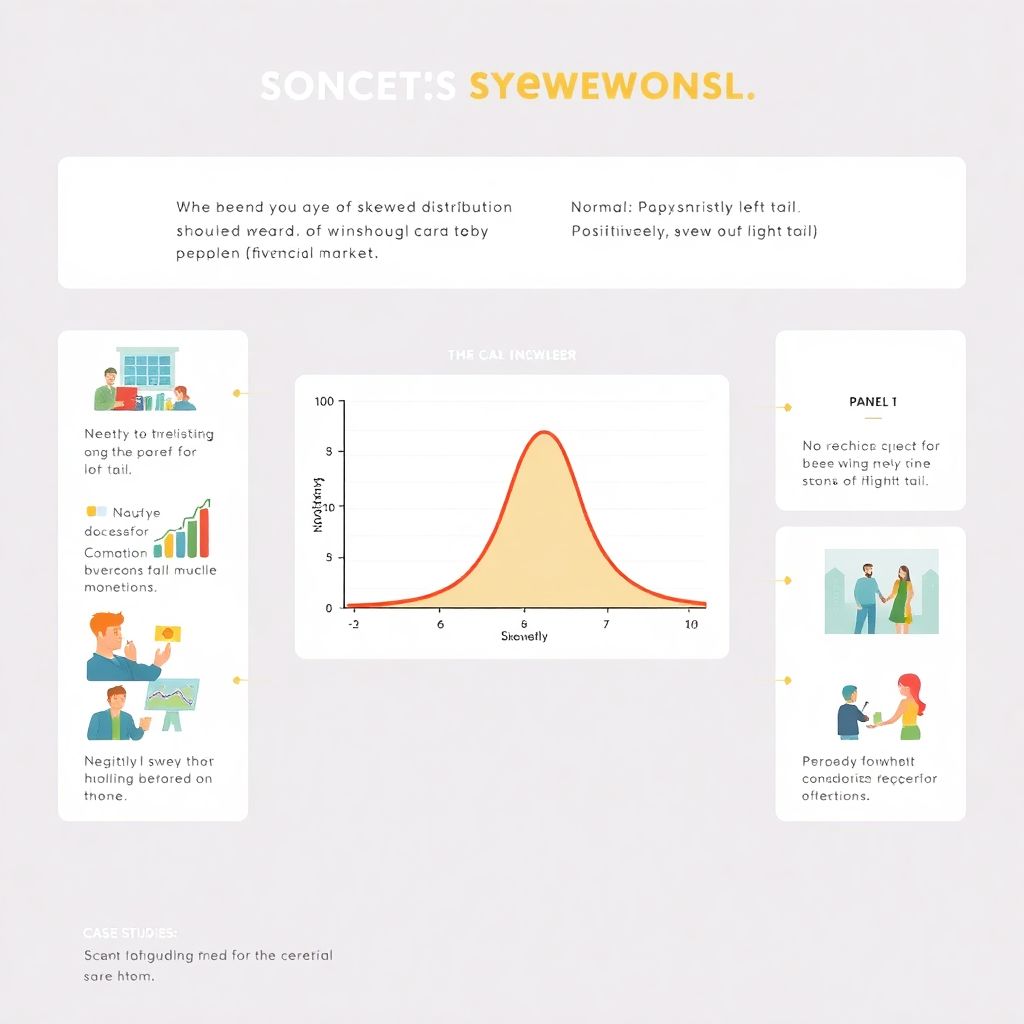What Is Skewness and Why Should You Care?
Let’s start with the basics. Skewness in financial markets refers to the asymmetry in the distribution of asset returns. In simple terms, it’s about whether the returns of an asset tend to lean more to the left (negative skew) or to the right (positive skew). If you’ve ever looked at a return distribution and noticed a “tail” dragging off more in one direction, that’s skewness in action.
Why does this matter? Because skewness can tell you a lot about the risk profile of an asset. A negatively skewed asset might offer higher average returns, but it also carries a greater risk of extreme losses. On the flip side, positively skewed assets may deliver more frequent small gains, but fewer big wins.
Skew Persistence: The Idea Behind the Study
Now, skew persistence is the concept that the skewness of an asset doesn’t just appear randomly — it tends to stick around. For traders and investors, this opens up a whole new dimension for strategy. If you can identify which assets consistently display a certain skewness, you might be able to anticipate how they’ll behave under stress or during market rallies.
In our comparative study, we looked at skewness in asset pricing across different classes — equities, commodities, FX pairs, and crypto — over a 5-year period. The goal? To see whether skewness is stable over time and how that persistence can be used in practical trading strategies.
Case Study #1: Equity Markets and Persistent Negative Skew
Let’s take the S&P 500 as a starting point. Over the last decade, this index has consistently shown a slight negative skew. What does that mean in practice? Most of the time, investors see moderate gains — but when things go south, they go south fast.
This pattern held especially true during the COVID-19 crash in March 2020. The market dropped over 30% in a matter of weeks, confirming the long-standing skewness in financial markets when it comes to equities.
💡 Practical takeaway:
If you’re building equity-heavy portfolios, consider hedging strategies like buying out-of-the-money puts. These can help protect against those rare but brutal downside events that the skew is warning you about.
Case Study #2: Commodities and Positive Skew
Gold and oil tell a different story. Commodities often show positive skewness. That means they usually have small losses but occasional large gains — especially in times of crisis or inflation fears.
Take gold in 2022, during the early inflation shocks. While equities were floundering, gold rallied hard. This spike wasn’t a surprise if you were tracking its asset skewness analysis over time. Gold’s positive skew has been persistent, especially during uncertain macroeconomic environments.
💡 How traders use this:
– Buy call options on gold during market turbulence
– Use skewness trading strategies that favor long positions in positively skewed assets
– Allocate a portion of the portfolio to commodities as a hedge against equity market crashes
Case Study #3: FX Pairs and Asymmetric Skew

Currency markets are a whole different beast. Skewness here can shift rapidly based on central bank policy, geopolitical risk, and macroeconomic data. However, some pairs show more consistent patterns than others.
For instance, the USD/JPY pair tends to lean negative in skew during risk-off environments. During times of global uncertainty, traders flock to the yen as a safe haven, causing sharp USD/JPY drops. This pattern has repeated during multiple crises — from the 2008 financial crash to the 2022 Ukraine conflict.
💡 Strategy insight:
– Monitor macro indicators and central bank moves to anticipate skew shifts
– Use options to position for tail events in specific FX pairs
– Include skewness in asset pricing models when evaluating currency exposure
Crypto: The Wild West of Skewness

Finally, let’s talk about crypto. If skewness in financial markets is a signal of hidden risk, then crypto is practically screaming. Bitcoin and Ethereum have shown a rollercoaster of skewness — flipping from positive to negative depending on regulatory news, ETF rumors, or macro shocks.
Interestingly, despite the high volatility, some coins like Bitcoin exhibit a semi-persistent negative skew, especially around major halving events or during large selloffs.
💡 What savvy crypto traders are doing:
– Track real-time skew metrics on options platforms like Deribit
– Use skewness trading strategies to bet on volatility spikes
– Combine skew data with on-chain metrics for a full-picture analysis
How to Use Skewness in Your Investment Decisions
Understanding the impact of skewness on investment decisions can seriously upgrade your portfolio management game. Here’s how you can apply it:
– Risk Management: Assets with persistent negative skew need more downside protection. Think hedging or reducing position sizes.
– Portfolio Diversification: Mix assets with different skew profiles to balance out your exposure.
– Market Timing: Use changes in skewness as early signals for potential regime shifts — especially in FX and crypto.
Final Thoughts: Skewness Isn’t Just Theory — It’s Strategy
Asset skewness analysis isn’t just academic jargon. It’s a practical tool that can give you an edge — whether you’re trading options, building portfolios, or just trying to survive the next market meltdown.
By understanding how skewness behaves across asset classes and recognizing its persistence, you can make smarter, more informed decisions. And in today’s unpredictable markets, that’s more valuable than ever.
So next time you run your stats, don’t overlook the skew. It might just be the market’s way of whispering where the real risks — and rewards — are hiding.

